Muni’s 21-Hayes bus line returned to service on July 9, 2022 after a 27-month pandemic suspension. Early in the pandemic, Muni management hoped that the crisis might give them an opportunity to rationalize the network by permanently shutting down some of the parallel routes that dated back to the 19th century. The 21 was one of several lines, including the 2-Clement and 6-Parnassus, on that list.
But following strong political pressure from Supervisor Dean Preston, who says he has used the 21 to commute between his home and City Hall, bolstered by support from the San Francisco Transit Riders and past users of the 21, it’s now back in service, albeit with a shorter route terminating at Market Street, rather than continuing on to the Ferry Terminal.
The 21 returns, at least for now, as a motor coach, but until the pandemic shutdown, transit on Hayes Street had been a fixed guideway route (horse car, cable car, streetcar, and trolley bus) for 160 years. Only Market Street can match that duration. In all modes of vehicle operation, transit has made Hayes a vital San Francisco street.
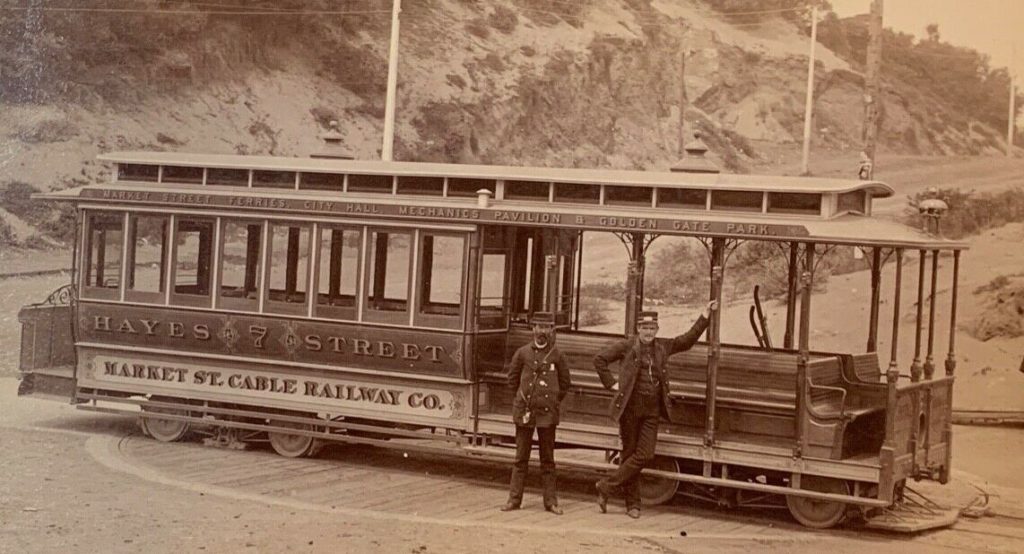
Transit service on Hayes Street started with a horsecar line built by Thomas Hayes in 1860 to increase the attractiveness and value of his real estate developments in what became Hayes Valley. In 1883, the Market Street Cable Railway Company inaugurated what became a five-line cable car network running up the spine of Market Street. It was San Francisco’s biggest transit capital investment until the Market Street Subway was built 90 years later. Cable lines branched off Market going west in this order: McAllister, Hayes, Haight, Valencia, and Castro. The Market Street lines used the largest cable cars in history, capable of carrying 130 passengers. (Only one of these giant cable cars survives, much modified, but once again operational: “Big 19”.)
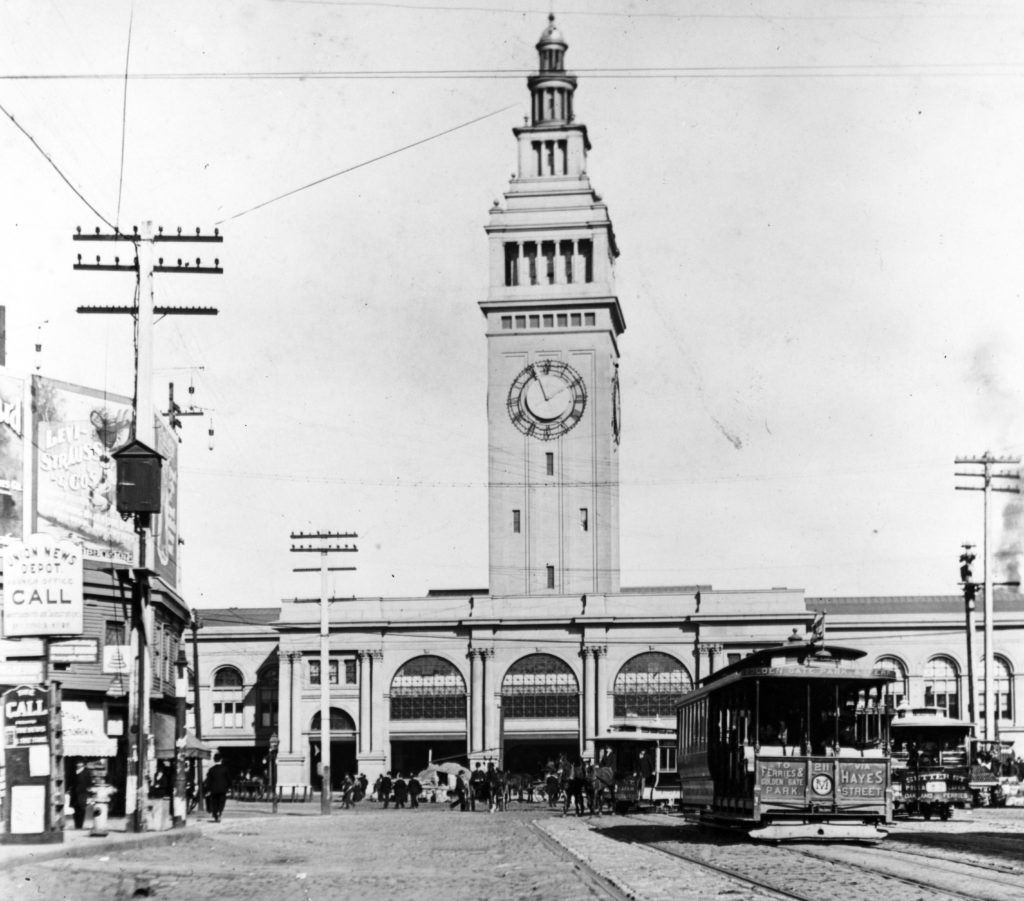
The 1906 Earthquake and Fire destroyed the Market Street cable system. Owner United Railroads quickly strung wires over the standard-gauge cable tracks of the Market Street lines and brought in electric streetcars to take over. Service was restored to Hayes Street less than two months after the ‘quake, an exceptional achievement.
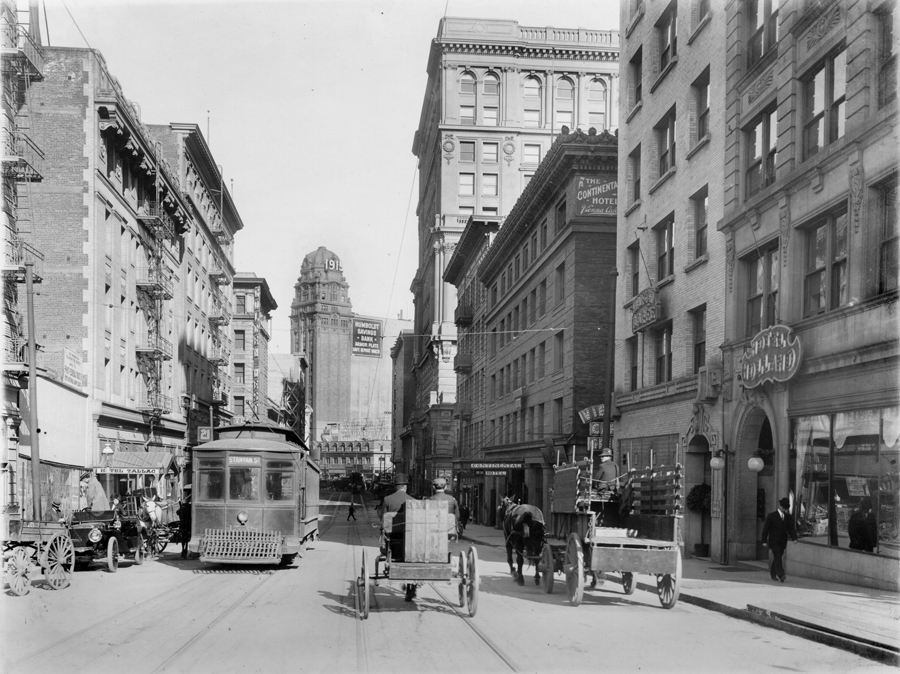
However, the grade on western Hayes Street between Pierce and Scott was too steep for electric streetcars. To get around this, United Railroads created two lines to serve Hayes. One, the Hayes and Ellis line, ran from Ellis and Market Streets out Ellis to Divisadero, then south on Divisadero to Hayes, west to the end of Hayes on Stanyan, then north on Stanyan to a terminal at Fulton Street. In 1911, when streetcar lines were numbered, this became the 21. The other Hayes line, the Hayes-Masonic, ran up Market from the Ferry, out Hayes to Fillmore, and then along existing streetcar tracks on Fillmore, Oak/Page, and south on Masonic, jogging over hills to reach what’s now UCSF on Parnassus Avenue. This line was numbered 6.
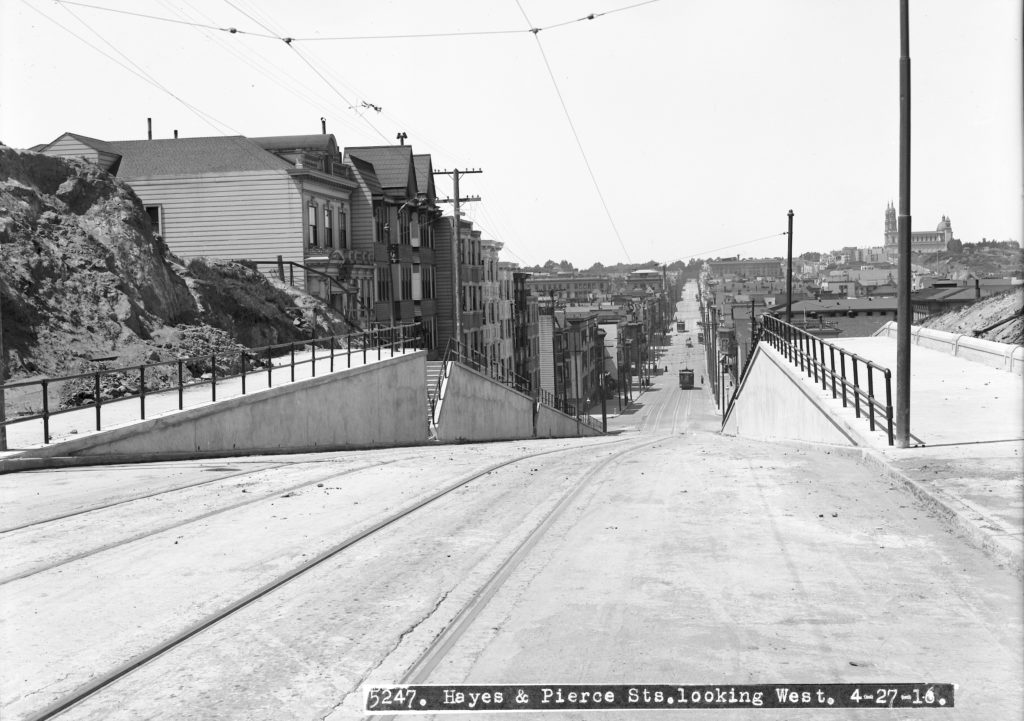
When that too-steep block on Hayes was regraded in 1916, routes were shuffled. The 6-line moved over to Haight Street, and the 21 moved from Ellis to run the length of Hayes Street, extended to the Ferry on Market. The 1916 changes restored the original Hayes cable route with streetcars, extended from the end of Hayes two blocks north on Stanyan to Fulton Street. By the 1930s, it had been further extended west on Fulton, running with the 5-line to 8th Avenue, then south on 8th Avenue to Clement Street.
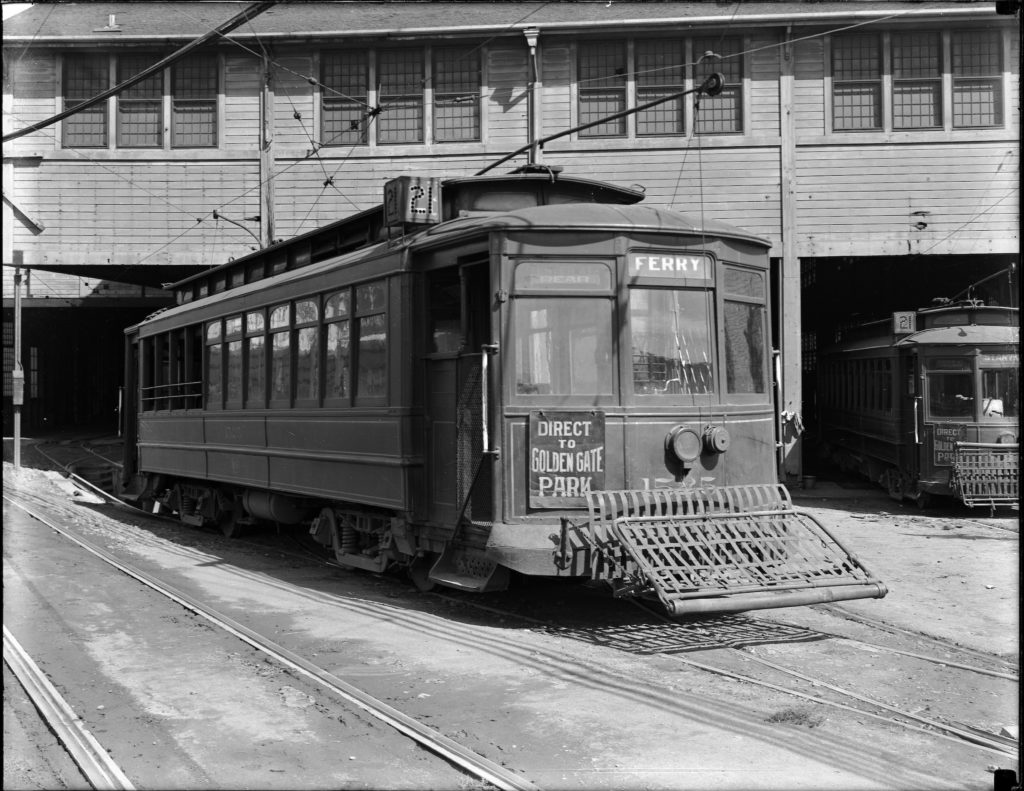
In those same 1916 changes, the route of the old 6-Hayes & Masonic was taken over by the 32-Hayes & Oak, but the 32-line had very low ridership, ended up using only three cars, lost money, and was discontinued by 1932.
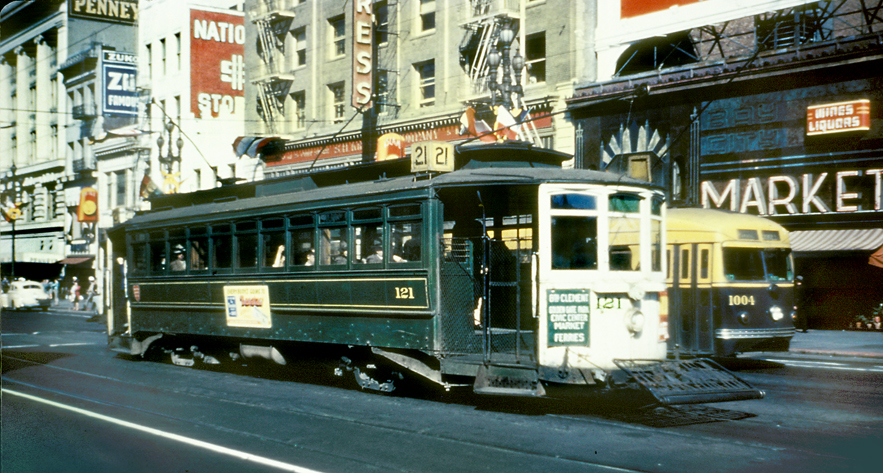
The 21-Hayes electric streetcar, however, was profitable and busy, running 25 streetcars at peak hours in 1929 (by comparison, today’s F-line, a bit longer, ran 22 peak-hour cars before the pandemic. By 1943, though, the number of peak cars on the 21-Hayes had dropped to 17, even as wartime loads increased overall. In 1948, the 21 became part of Muni’s mass conversion of streetcars to buses, motor coaches temporarily while the overhead wires were converted, then trolley coaches starting in mid-1949.
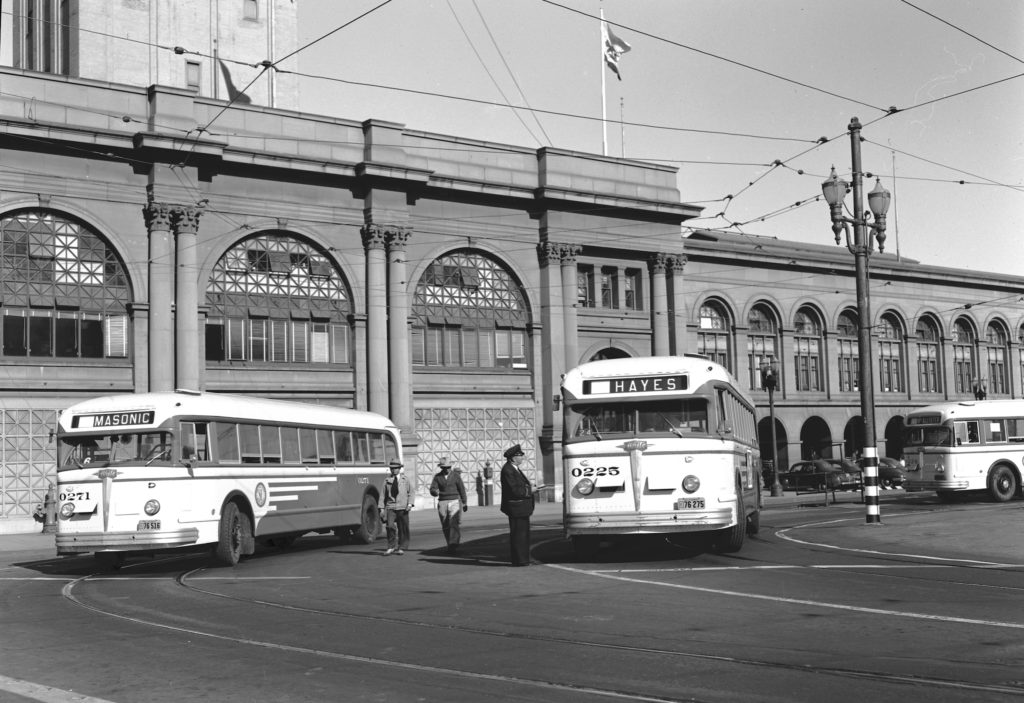
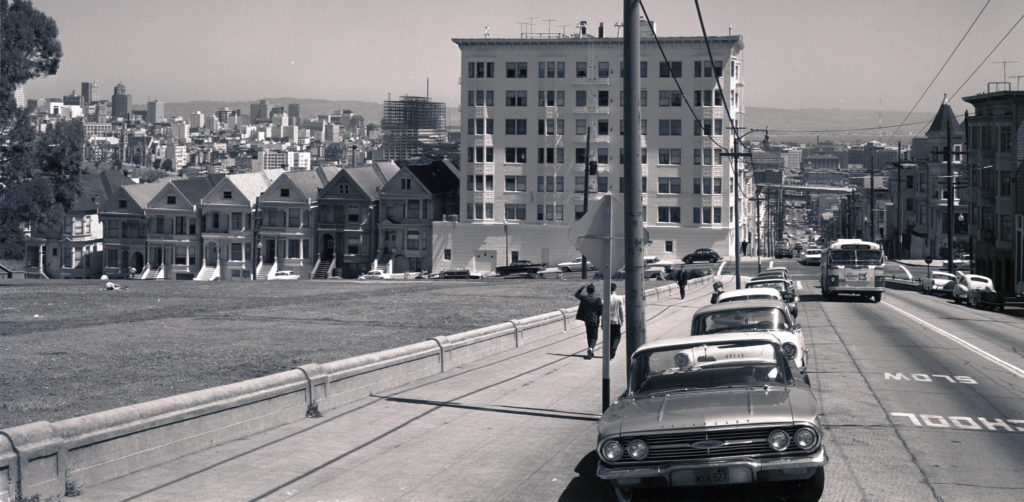
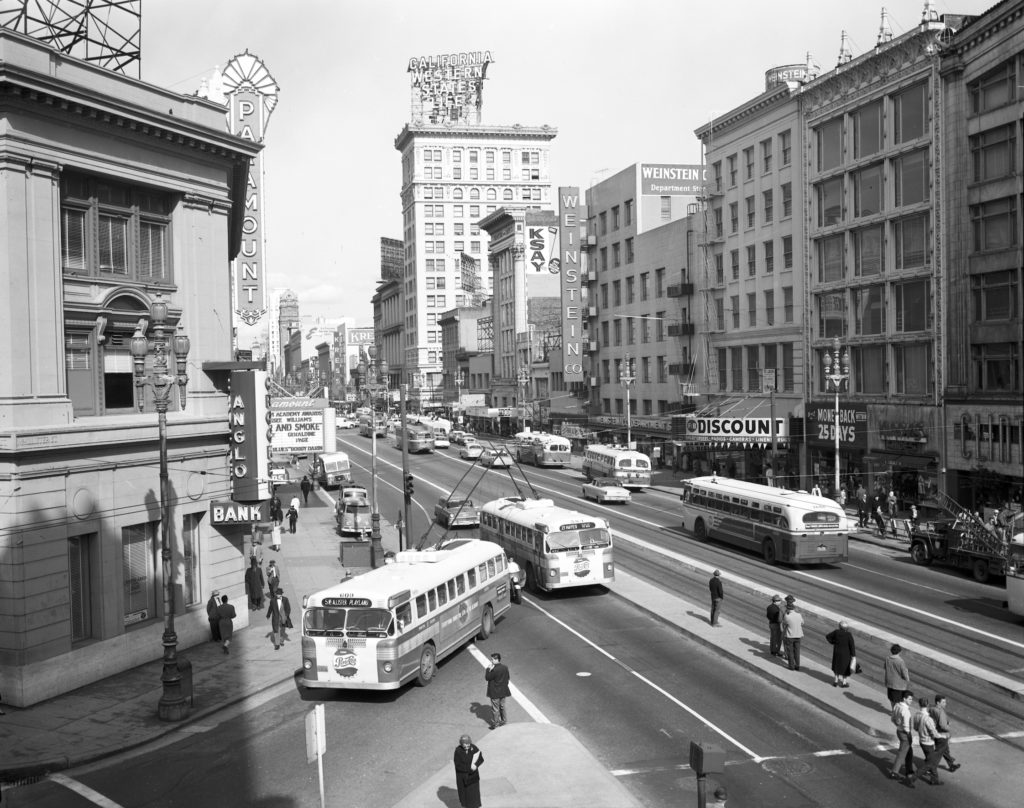
After the overhead was rebuilt from single-wire (for streetcars) to dual-wire, trolley buses took over the route in 1949 and served it until 2020, when the pandemic shut almost all of Muni down. As budgets got tighter and ridership patterns changed, Muni cut the 21-line back to Stanyan and Fulton, and now, they’ve removed the Market Street segment as well, with that main street having ample service, at least until downtown office buildings fill up again.
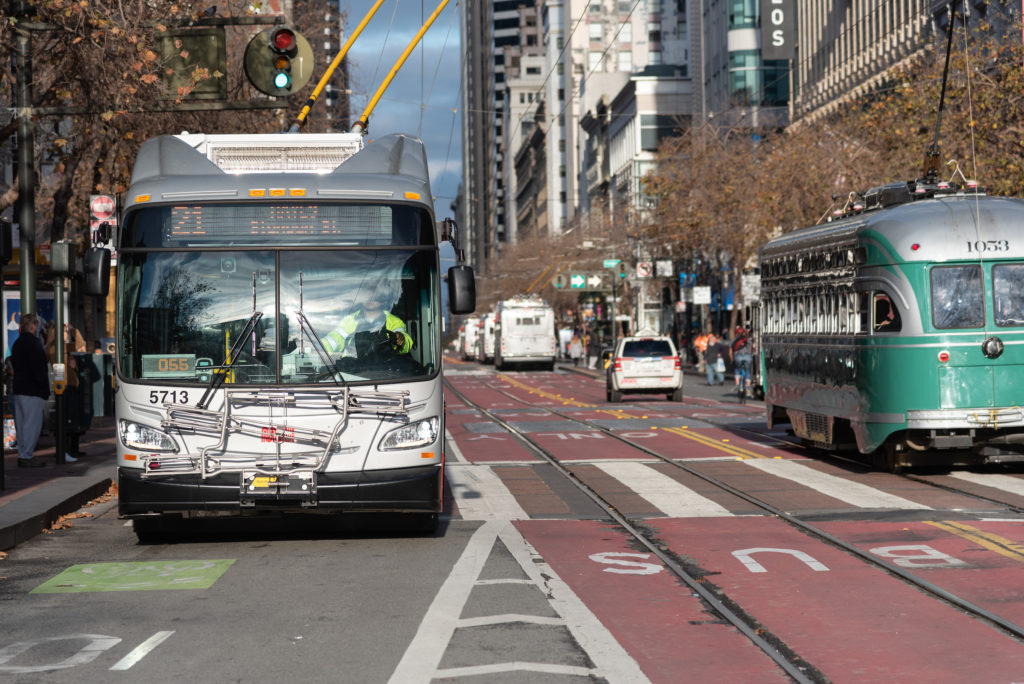
By Rick Laubscher
If you like our exclusive content, please consider even a small donation to help our nonprofit.
My history of the 21 line only extends to the Twin coach, Faegols…I loved their ride, it seemed every bounce was throwing people in multiple directions….wondering why it seemed the ‘Twins’ only ran on the 21 and 30 Stockton lines…
I remember the Twins running often on the 1,3,5 and the 41 at various times. They were all based at Presidio Division
Why were the trolley buses from Kent, Ohio used on the 5, 21, and 30 lines and nowhere else?
There were 90 Faegol-Twin coaches in the fleet, and more than twice as many Marmon-Herringtons. Early in their careers, Muni put all the Twins at Presidio Division, along with some Marmons that had the same type motors. The rest of the Marmons and the few St. Louis coaches they had were housed at Potrero. As I commented above, the Twins ran on the 1, 3, 5, and the 41 runs that were filled from Presidio (some 41 runs were filled from Potrero). Those lines in addition to the 30. In photos I’ve seen from the very first year of trolley coach operation, Twins appeared on the 8-Market and the 22-Fillmore. That was probably before the Twins were consolidated at Presidio Division. Trolley Coach lines like the 6, 7, 9, 12, 14, and 33 ran from Potrero, which didn’t have Twins.
As a citizen of San Francisco I consider all of our historic transit lines important in getting around this city, the #21 Hayes is not the line it was pre pandemic and is suffering from lack of patronage because it goes to nowhere in a way, it should go to 4th and Market until full coverage to the Ferries begins again in the future. The # 21 is a great line and should run like the great historic line that it is, expand please.